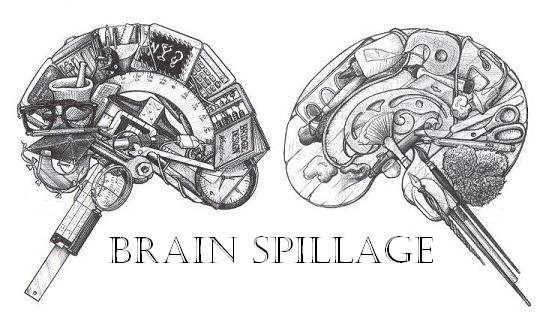Please watch this
You might think it's a typical, useless and ineffective public awareness program. Another one. Yes? No? It probably is. Chinese people are tragically more impressed by showings of wealth and prosperity. If they could eat hummingbird tongues, mermaid tails and unicorn horns, they would.
In the video you see a Napoleon Wrasse being taken out of holding pens on the sea and the swimming in an aquarium in a restaurant. Don't be fooled. That's not a fish farm. Some time back someone posted a picture of a large Napoleon Wrasse in an aquarium in a shop on a dive forum. I felt I had to reply to that particular thread.
The picture in question is from the Malaysian Underwater forum and posted by a member with the nick 'arrifin'. I hope no one objects to my using the picture here.
You might have seen this fish in a restaurant. It may appear big but it is a young fish. They grow slowly and live long. Up to 6 feet in length and an average of 30 years. This fish is just a juvenile. I have seen this fish while diving (Mid Reef, Sipadan). It is a beautiful and magnificent fish. Leave it where it belongs.
It is said that most divers end up eating farmed fish. I've already commited to it a while back and I don't eat sea food at all.
This is what I posted:
"I seriously doubt this is a cultivated fish. It matures and grows slowly to 2m/6ft and has a long lifespan, about 30 years. This fish is listed as endangered on the IUCN Red List of Threatened Species. Conservation action has been taken by a number of countries including Australia, Indonesia, China, Philippines, Palau and Papua New Guinea. How effective, I don't know. However, Malaysia is not on the list. Basically, a Napoleon Wrasse's hope to stay off the dinner table is to live in marine reserve parks and perhaps popular dive locations.
Below is an edited excerpt from the Napoleon Wrasse's entry by the Species Survival Commission.
Wherever it is fished, even if only moderately, density quickly declines to 25% or less. It is particularly heavily exploited in key supply countries for the live reef fish trade, Malaysia and Indonesia, and out of Palawan, its stronghold in the Philippines. In these countries all available fishery-dependent and trade-related data suggest declines over 10–15 years in exploited areas of 10–fold or more with fish now considered rare in areas where once it was common. Buyers of this fish are continually having to source new areas as numbers decline and the pattern of fishing reported is one typical of rapid serial depletions. Much of the capture in all major source countries for live fish are of small fish, mainly juveniles, according to all reliable accounts. Moreover, juveniles are the preferred size range for retailers of live Humphead Wrasse. Such is the concern for this species that it is one of the only reef fish protected by name (i.e., species name) across a range of countries. Some spawning aggregations have been noted to decline or have disappeared in eastern Malaysia and Australia.
Malaysia
An extensive series of underwater visual census surveys at more than 30 survey sites around Sabah (the major supplier and source of this species in Malaysia) found that, after extensive and uncontrolled fishing had occurred, only 2 sites had more than 1 Humphead Wrasse per km squared with only two reproductive sites identified. Population declines determined from these surveys to have occurred since 1974 were 99.91% in Humphead Wrasse numbers, when compared with similar unfished reefs. Sabah is the principle source of Humphead Wrasse in Malaysia, and a location central to the geographic range of the species with habitat suitable for the species (TRACC 2004). It is also thought that spawning aggregations may have eased in the area as a result of overfishing (T. Daw, pers. comm., based on WWF Malaysia Project Report 2002).
This species is found in marine protected areas (MPA) of peninsular Malaysia (e.g., Pulau Payar, west coast) and, in a survey of Sabah, was noted from Mabul Is., Bodgaya Is. (Semporna district) and Sipadan Is. (A. Cabanban, pers. comm.; G. Allen, unpublished data; World Wildlife Fund, unpublished data). The Humphead
Wrasse is nowadays rarely seen by divers in much of eastern Malaysia, where most of the country’s coral reefs are located. Exceptions are at Pulau Layang Layang where an estimated 350 fish measuring 60-120 cm TL were noted, and west of Sabah and Pulau Sipadan where an estimated 70 fish were recorded in the late
1990s) (TRACC 2004). These locations are protected by the Royal Malaysia Navy and by dive resorts, respectively. The TRACC study around coasts of Sabah yielded only 2 sites with more than 1 fish noted per km with most fish in the immature size range (TRACC 2004).
However good it may taste, I'm not having any. It's no damn different from shark fins. I bought that t-shirt too."
Nat bought me a book entitled Reef by Scubazoo, a team of underwater videographers and photographers. I met one of them, a friend's husband, some years back in Kota Kinabalu. He mentioned in the book that he tries to portray the true nature of sharks while he is photographing them. I think I know what he means. He photographs the large predators, the tiger sharks, the altantic white tip and the sand tiger to name a few. People ask him if being so close to such predators and proven man killers frighten him. As wary of the shark as he may be, he's seen and filmed the slaughter of sharks. He's filmed a sea bed littered with shark heads and unwanted parts discarded after the fin harvest. Fearsome predator it may be but it's actually very very vulnerable.
STOP EATING SHARK FINS YOU FUCKERS.


1 comment:
Never fancied sharks fin to begin with ...
Post a Comment